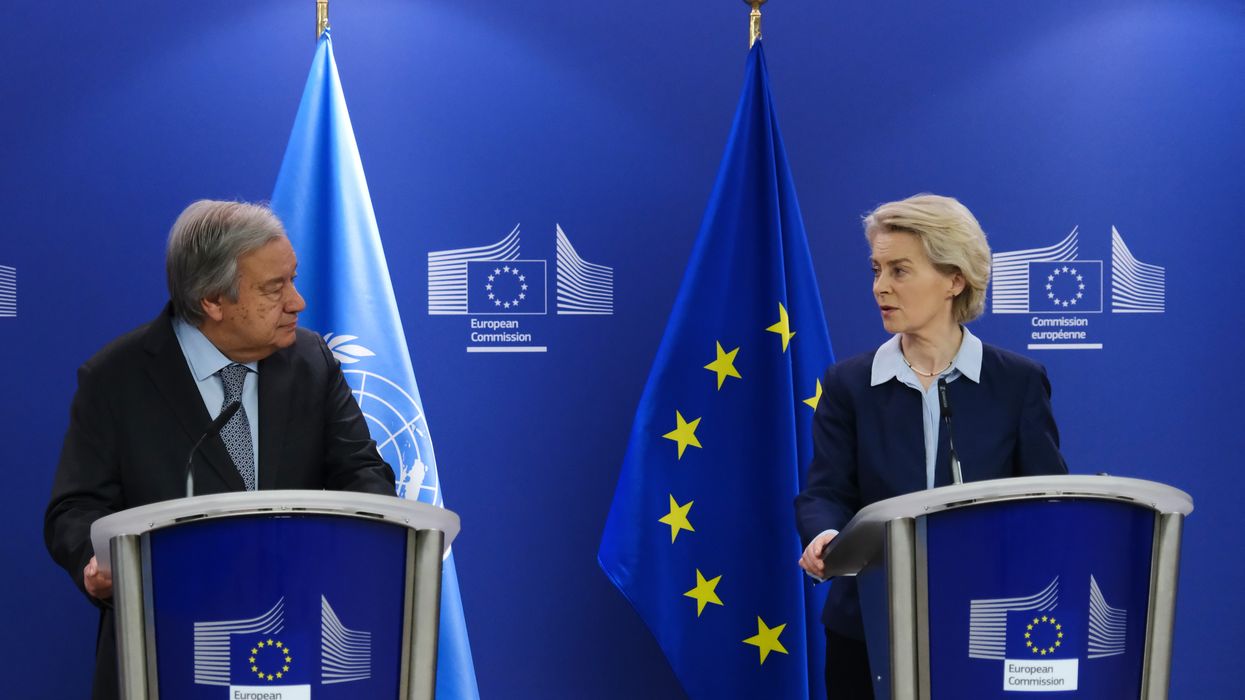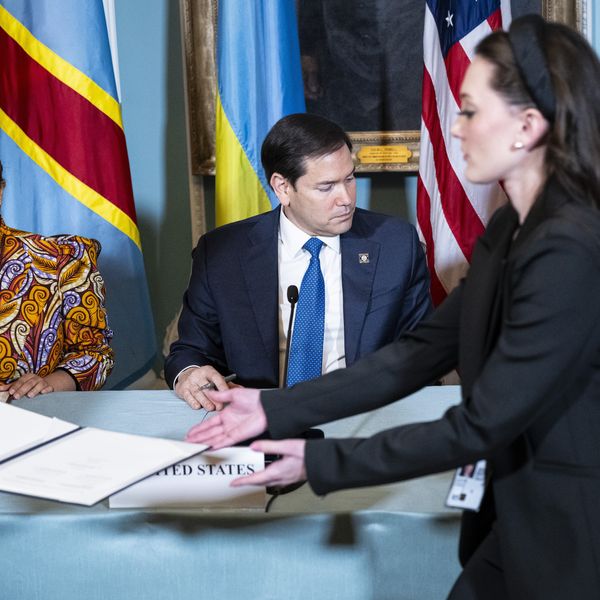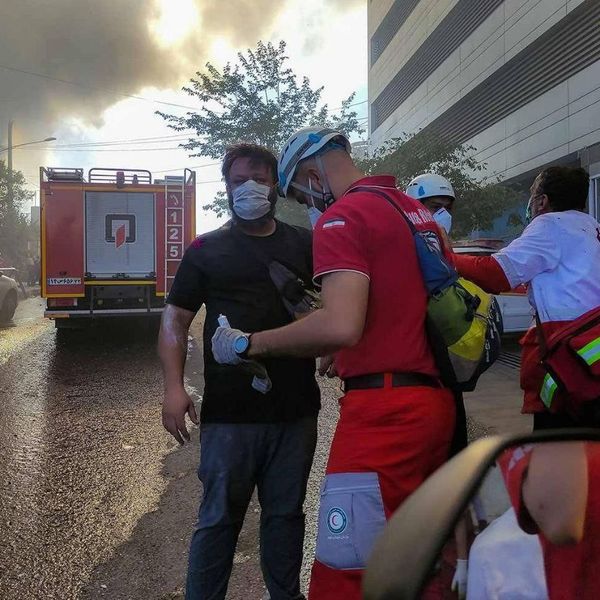It is time to retire the phrase “military-industrial complex.”
President Dwight Eisenhower coined this immortal phrase during his January 17, 1961 farewell address to warn Americans against the “acquisition of unwarranted influence” by the conjunction of “an immense military establishment and a large arms industry.”
As a five-star general, Ike knew, perhaps better than anyone, the self-serving and mutually beneficial relationship between the defense industry and the military. But he neglected to mention Congress’s role in the arrangement, nor could he necessarily have foreseen the ways in which corporate interests would intertwine themselves with the various bureaucracies that keep the Pentagon's coffers flowing.
While the phrase “military-industrial-congressional-information complex” would be more accurate, it doesn’t exactly roll off the tongue. And like Eisenhower’s snappier appellation, it still suggests an element of conspiracy. But, of course, none of this is theoretical.
The Pentagon, Congress, the defense industry, think tanks, lobbyists, and industry-sponsored media outlets are all very real. When combined, they make up what is better termed the “National Security Establishment,” which Americans see in action all the time.
We see it when a retired general goes on television to explain exactly how the Ukrainian army can defeat the Russians — but only if Congress passes the latest billion-dollar aid package. No mention is made of the rather relevant fact that the general’s think tank is funded by defense contractors who stand to benefit from the aid package he is calling for.
We see it when another general retires from his post as the head of his service branch and turns up six months later on the board of a major defense contractor. Coincidentally, it’s the same defense contractor that celebrated a year earlier when that general announced the company had won the $21.4 billion contract to build a fleet of bombers.
We see it when a senior member of the Senate Armed Services Committee proposes the U.S. spend 5% of the gross domestic product every year on the military — a $55 billion increase to the current Pentagon budget. Predictably, he fails to mention that the majority of this money would go to defense contracts awarded to the same organizations that have given him more than $530,000 in campaign money since 2019. He fails to acknowledge how flush Pentagon budgets over the past 25 years created the sorry state of the military today.
We even see it when we least expect to, as when the country’s largest defense contractor runs advertisements during the Oscars and posts an interactive map on the company’s website touting the economic benefits of a weapon program. The company wants everyone to know how many jobs could be lost if Congress votes to disrupt the program in any way.
The American people also see the impact of these actions by the National Security Establishment.
We see tens of billions spent on a fighter jet that can only be reliably ready for combat a third of the time. We also see more than $60 billion spent designing and building warships that were so flawed Navy officials apparently can’t get rid of them fast enough. The Navy decommissioned one of these ships less than 5 years after its commissioning ceremony, roughly two decades ahead of the ship’s planned lifespan.
Starting in 2003, the Army spent at least $8 billion, and some sources say the better part of $20 billion, developing the Future Combat System, a family of armored vehicles to replace Cold War-era tanks, personnel carriers, and artillery vehicles. The Pentagon then canceled the program in 2009 with little to show for the effort and expense.
There are plenty of other examples of failed acquisition efforts from the past 25 years which partially explain why annual defense spending is now a whopping 48% higher than it was in 2000. Compounding these efforts is the Pentagon’s reliance on contractors to perform many roles once performed by uniformed service members at a much lower financial rate. The Department of Defense itself analyzed one case where hiring a group of contractors cost 316% more than the government employees tasked with similar work.
In a city where partisanship and political rancor impacts nearly every debate, wasteful and ineffective defense policies are a conspicuous exception. That is because the National Security Establishment is party-agnostic. Military contractors donate money to candidates and lobbyists on both sides of the aisle, those candidates vote for Pentagon budget increases and fund weapons programs long after their failures are widely known, and lobbyists and corporate-sponsored media groups generate public support for those programs.
Without massive structural changes, this pattern is all but certain to continue into future generations. Today’s National Security Establishment has launched several major weapons programs in recent years that, if allowed to continue on their current trajectories, will drive the annual Pentagon budget to truly unprecedented levels.
As programs like the B-21, Constellation-class frigate, Next Generation Air Dominance fighter jet, Columbia-class ballistic missile submarine, several ground vehicle programs, the Sentinel nuclear missile, and myriad space and cyber systems mature and enter full-rate production in the coming decades, the Pentagon budget will expand to cover the costs.
But this doesn’t have to be the case, if Congress actually does its oversight job. Several of these programs are already behind schedule and over budget. Costs for the Sentinel missile program have increased 81% to $140.9 billion from the original $77.7 billion estimate and it will still be several years before the first missile is installed in its silo. Yet, given the massive financial influence, even these egregious failures are all but glossed over, a simple footnote for most, and then prepared for a rubber stamp.
The services and their bureaucracies, the defense industry, members of Congress, and the paid mouthpieces promoting their interests in the media and during lobbying visits all comprise the all-too-real National Security Establishment. Identifying this network is the first step to avoid saddling future generations with the crushing debt associated with unsustainable U.S. military policies today.
While it is long-past time to update the name, Eisenhower’s warning is still more real than ever. Americans must remain vigilant and guard against the self-serving nature of this apparatus that is more intent on lining its own pockets than it is actually keeping Americans and our allies safe.
-
- Oppenheimer and the birth of the nuclear-industrial complex ›
- What Ike's military industrial complex speech didn't say ›
- This is not your grandparents' military industrial complex ›
- Top defense firms spend $1B on lobbying during Afghan war, see $2T return ›
- Who gives 'Three Cheers for the Military-Industrial Complex'? | Responsible Statecraft ›
- Welcome to the defense death spiral | Responsible Statecraft ›
- 5 ways the military industrial complex is a killer | Responsible Statecraft ›














